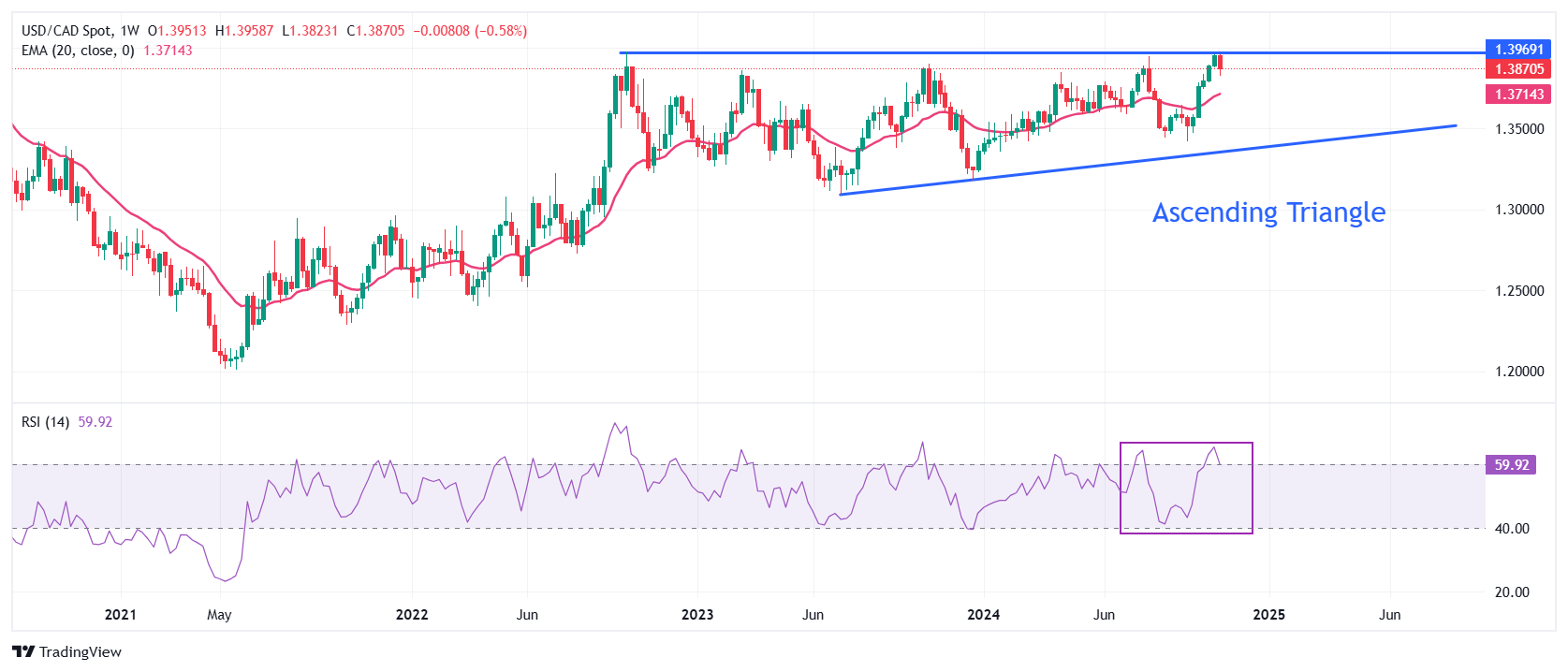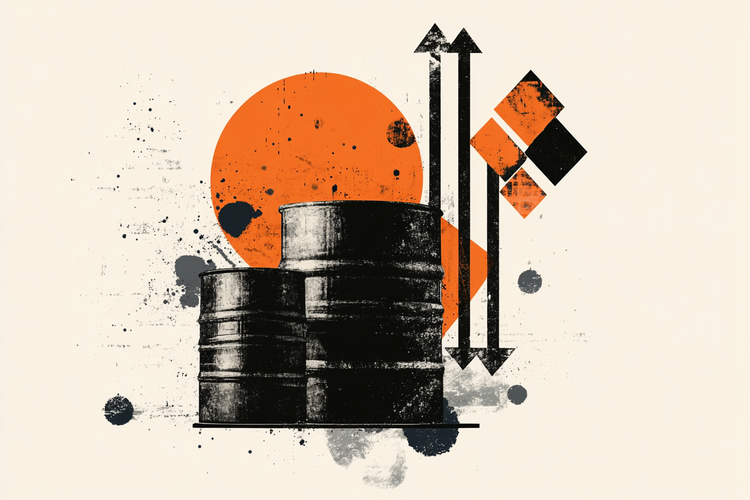- USD/CAD falls below 1.3900 after failing to sustain Wednesday’s recovery.
- Investors await the Fed’s policy decision and Canadian employment data.
- The Fed is expected to cut interest rates by 25 bps to 4.50%-4.75%.
The USD/CAD pair corrects below the round figure of 1.3900 in the North American session on Thursday. The Loonie pair falls after recovering on Wednesday, as the US Dollar (USD) faces some sell-offs ahead of the Federal Reserve (Fed) monetary policy decision, which will be announced at 19:00.
The US Dollar Index (DXY), which tracks the value of the Dollar against six major currencies, retraced 50% of the gains from Wednesday’s session in which it rose almost 1.60%.
Traders have priced in that the Fed will cut interest rates by 25 basis points (bp) to 4.50%-4.75%, according to the CME’s FedWatch tool. Investors will look for clues about likely monetary policy action in December and the impact of Republican Donald Trump’s victory on the inflation outlook.
Meanwhile, the Canadian Dollar (CAD) will be influenced by October domestic employment data, due to be released on Friday. Economists expect the Canadian economy to have added 25,000 new workers, down from 46,700 in September. In the same period, the unemployment rate is estimated to have increased to 6.6% from 6.5%.
USD/CAD is trading near the upper boundary of the Ascending Triangle chart pattern on a weekly time frame around 1.3950. The upward-sloping 50-week EMA around 1.3640 suggests a strong uptrend.
The 14-day Relative Strength Index (RSI) is hovering near 60.00. If the RSI (14) remains above 60.00, bullish momentum will be triggered.
More upside would appear if the asset breaks above the immediate high of 1.3950. The scenario will pave the way for the psychological resistance of 1.4000 and the round level resistance of 1.4100.
Conversely, a move lower below the October 29 low of 1.3875 will expose the asset to the October 15 high near 1.3840, followed by the round figure of 1.3800.
USD/CAD Weekly Chart
The Canadian Dollar FAQs
The key factors that determine the price of the Canadian Dollar (CAD) are the level of interest rates set by the Bank of Canada (BoC), the price of oil, Canada’s main export product, the health of its economy, inflation and the trade balance, which is the difference between the value of Canadian exports and its imports. Other factors are market confidence, that is, whether investors bet on riskier assets (risk-on) or look for safe assets (risk-off), with the risk-on being positive for the CAD. As its largest trading partner, the health of the US economy is also a key factor influencing the Canadian dollar.
The Bank of Canada (BoC) exerts significant influence over the Canadian Dollar by setting the level of interest rates that banks can lend to each other. This influences the level of interest rates for everyone. The BoC’s main objective is to keep inflation between 1% and 3% by adjusting interest rates up or down. Relatively high interest rates are usually positive for the CAD. The Bank of Canada can also use quantitative easing and tightening to influence credit conditions, with the former being negative for the CAD and the latter being positive for the CAD.
The price of oil is a key factor influencing the value of the Canadian Dollar. Oil is Canada’s largest export, so the price of oil tends to have an immediate impact on the value of the CAD. Generally, if the price of oil rises, the CAD also rises, as aggregate demand for the currency increases. The opposite occurs if the price of oil falls. Higher oil prices also tend to lead to a higher probability of a positive trade balance, which also supports the CAD.
Although inflation has traditionally always been considered a negative factor for a currency, as it reduces the value of money, the opposite has actually happened in modern times, with the relaxation of cross-border capital controls. Higher inflation often leads central banks to raise interest rates, attracting more capital inflows from global investors looking for a lucrative place to store their money. This increases the demand for the local currency, which in the case of Canada is the Canadian Dollar.
The published macroeconomic data measures the health of the economy and may have an impact on the Canadian dollar. Indicators such as GDP, manufacturing and services PMIs, employment and consumer confidence surveys can influence the direction of the CAD. A strong economy is good for the Canadian dollar. Not only does it attract more foreign investment, but it may encourage the Bank of Canada to raise interest rates, resulting in a stronger currency. However, if economic data is weak, the CAD is likely to fall.
Source: Fx Street
I am Joshua Winder, a senior-level journalist and editor at World Stock Market. I specialize in covering news related to the stock market and economic trends. With more than 8 years of experience in this field, I have become an expert in financial reporting.








